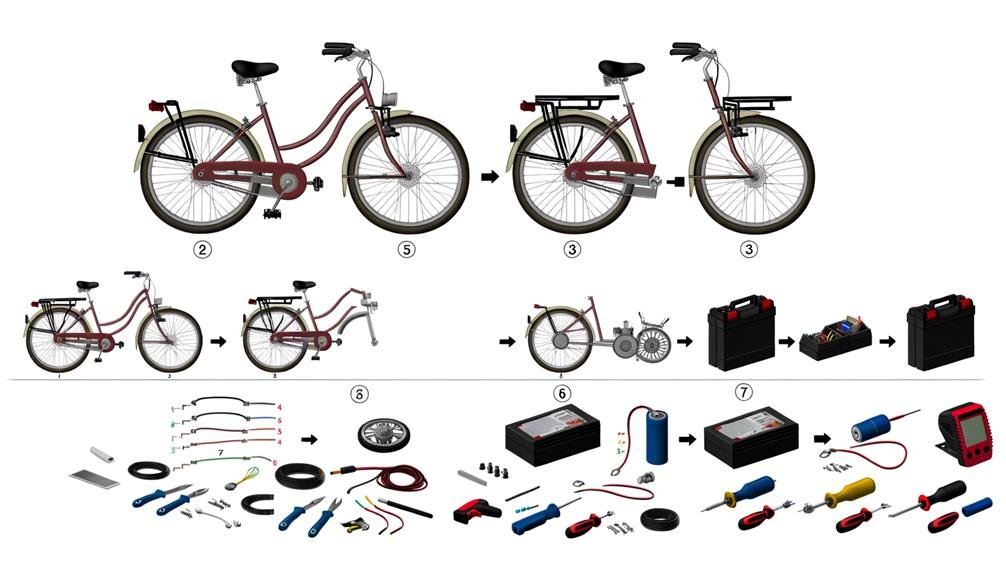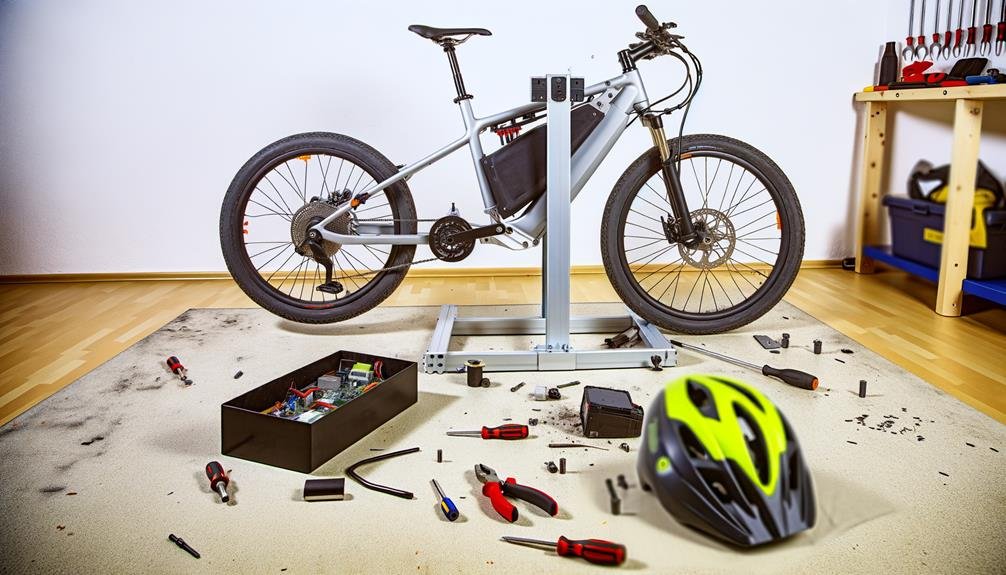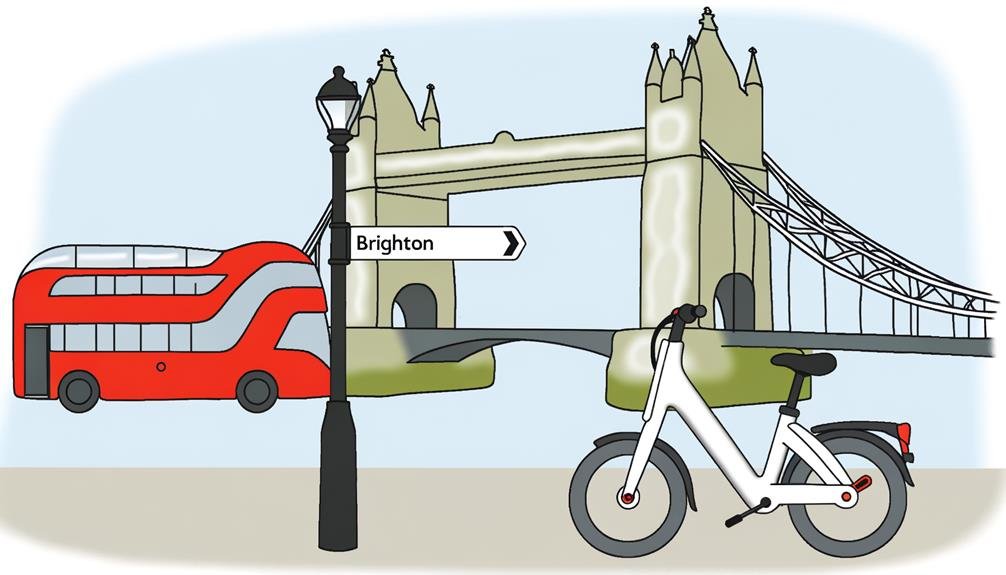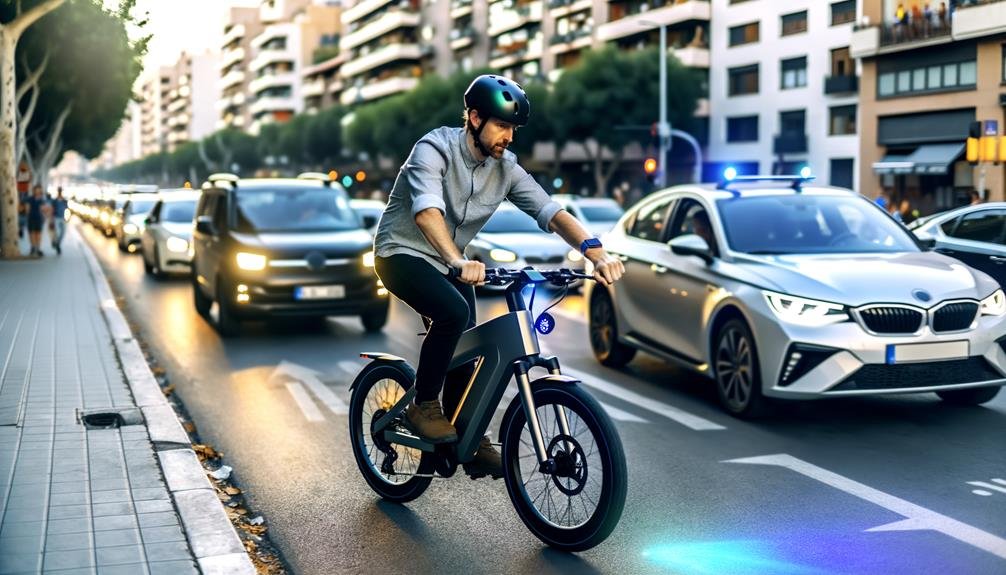Charles Miller is a veteran bike enthusiast with over 12 years of experience dealing with bikes as a mechanic. Despite immense love and expertise for...
In the increasingly green-conscious world we're navigating, we've found ourselves more frequently exploring the art of transforming traditional bicycles into electric powerhouses. The conversion process, while seemingly daunting, is a journey we're more than capable of taking together.
It's not just about slapping a motor onto your old bike, but rather choosing the right conversion kit, following the correct installation steps, and understanding the safety precautions involved.
And while we've only gently scratched the surface, the intrigue of how to retrofit an electric bike is an adventure waiting to unfold further.
- Key Takeaways
- Understanding Electric Bike Conversion
- Choosing the Right Conversion Kit
- Installation Process of E-Bike Kit
- Safety Precautions for Retrofitting
- Maintenance of Retrofitted E-Bike
- Troubleshooting Common E-Bike Issues
- Benefits and Challenges of E-Bike Retrofitting
- Frequently Asked Questions
- Conclusion
Key Takeaways
- Choose the right conversion kit that aligns with your budget, bike compatibility, and specific needs.
- Prioritize safety by following the installation process and taking necessary precautions, such as using protective gear and properly retrofitting the bike.
- Regular maintenance and repair are essential for optimal performance and safety, including checking battery and wiring, tire pressure, and making necessary adjustments.
- E-bike retrofitting offers numerous benefits, including giving existing bikes a power boost, enhancing fitness levels, and being a cost-effective alternative to buying a new electric bike. However, it is important to consider legal implications, varying installation skills, weight factors, and conversion kit prices before making a decision.
Understanding Electric Bike Conversion
When embarking on the journey to retrofit your bike into an e-bike, it's crucial to first familiarize ourselves with the top-rated e-bike conversion kits available. These include Cytronex, Bafang Front, Rubbee X, Swytch, and Bafang Mid. Each kit offers unique features and installation processes.
These electric bike conversion kits help us convert a bike into an efficient, powerful, and eco-friendly e-bike. Depending on our personal requirements, we can choose between hub motors or mid-drive motors. Both options provide substantial power output. We can install these motors on either the front or rear wheel and attach a battery pack that fuels the motor conversion.
As we delve deeper into the world of e-bike conversion kits, we understand that factors like range needs, bike compatibility, and our local e-bike laws also play a pivotal role in our selection. Additionally, we must consider a kit's pedal assist feature, which can enhance our riding experience.
As a community that values innovation, we must also comprehend the cost and legal aspects associated with retrofitting a bike. Let's embrace the power of e-bike conversion kits and enjoy the benefits of extended ride range, improved fitness opportunities, and cost-effectiveness.
Choosing the Right Conversion Kit
Navigating the plethora of e-bike conversion kits on the market, we'll need to carefully evaluate each kit's installation process, customizable specs, motor power, and whether it includes a battery, to ensure we choose the best fit for our individual needs and local regulations.
The best electric bike conversion might be a mid-drive system like the Bafang Mid-Drive or TongSheng Mid-Drive, or a hub system, depending on our standard bike's configuration and our comfort in handling different motors.
Our guide to e-bike conversion emphasizes the importance of considering not only the raw power of the motor but also its ease of use and the riding conditions we'll most often encounter. We should also verify whether the kit has a battery included, as this can significantly impact the overall cost and range of our retrofitted e-bike.
In our journey to belong to the eco-friendly, cost-effective community of e-bike riders, let's remember that the perfect conversion kit for us is the one that meets our specific needs, complies with local regulations, and aligns with our budget. It's not about the hype or the brand, but about the right fit for us.
Installation Process of E-Bike Kit

Before diving into the installation process, it's crucial that we've gathered all necessary tools and carefully studied the specific instructions provided by our chosen e-bike conversion kit manufacturer. This ensures that our system is compatible with the best electric bikes and guarantees an optimal ride quality.
The heart of the e-bike conversion lies in the electric motor, specifically placed in the hub where the motor sits. It's important to secure the motor to the hub, ensuring it's firmly in place. The mid-drive kit is a popular choice in the conversion power sector, due to its balance and efficiency.
Here's a table illustrating the next steps:
| Steps | Description |
|---|---|
| 1 | Install the torque arm, which prevents the motor from spinning out of the wheel. |
| 2 | Mount the battery and controller in a suitable location. |
| 3 | Attach additional components like the thumb throttle, LCD monitor, brake sensor, and pedal assist. |
After completing the installation process of the e-bike kit, it's crucial to test each component's functionality. This ensures the safety and performance of our newly converted e-bike. Always remember, the journey to creating the best electric bikes is one of patience and precision.
Safety Precautions for Retrofitting
As we shift our focus to 'Safety Precautions for Retrofitting', it's crucial to consider the use of essential protective gear, such as gloves and safety glasses, during the retrofitting process.
The risks of improper retrofitting can't be underestimated, with potential hazards ranging from electrical shorts to structural failures.
Essential Protective Gear
When retrofitting an electric bike, it's crucial to arm ourselves with the essential protective gear to ensure safety throughout the process. Our 127-step guide will detail the required equipment needed to safely install a rear hub motor, disc brakes, and the entire conversion system on your mountain bike.
Here are the essentials:
- Cycling-specific gear:
- Helmets: It's a no-brainer to make sure you've got a sturdy helmet for test rides.
- Gloves: They offer grip and protect against potential cuts or burns during the conversion.
- Workshop safety equipment:
- Safety goggles: Protect your eyes from flying debris while working on your electric bike.
- Insulated tools: They're essential to protect against electric shocks.
Risks of Improper Retrofitting
Equipped with the necessary safety gear, let's now navigate the potential risks and safety precautions to consider when retrofitting your bike improperly.
- A wrong battery with insufficient amp hours can overwork the motor, leading to overheating and possible damage.
- The wheel's compatibility is crucial too; an inappropriate front wheel can destabilize the e-bike conversion, compromising your safety.
- Improper drive installation might also cause strain on the crank arms, affecting the bike's overall performance.
- Brake sensor and cadence sensor are vital as they improve braking efficiency and regulate motor output, respectively. Inaccuracy in their installation might lead to unresponsive controls, posing a serious safety threat.
We're part of a community that values safety, so let's retrofit our bikes properly and ride with confidence.
Maintenance of Retrofitted E-Bike

As we move forward in our discussion about retrofitting an electric bike, let's shift our focus to the maintenance of retrofitted e-bikes.
We'll touch on the importance of routine checks and also provide a guide on how to repair common issues that might crop up.
It's crucial to remember that regular maintenance not only enhances the bike's performance but also prolongs its lifespan.
Routine E-Bike Checks
Ensuring the longevity and optimal performance of your retrofitted E-Bike requires routine checks on key components. These include the battery, wiring, tire pressure, brakes, and more.
To drive e-bike conversion to its best, we need to:
- Regularly inspect the battery, which should be a power source from a reputable brand, and the wiring. Make sure they are secure and undamaged.
- Check connections, as they are vital for the smooth operation of your new e-bike.
- Tire pressure and front wheel tread need to be checked for wear and tear.
- Adjustments, if needed, ensure safety and optimal performance.
Cycling Plus recommends examining the brakes, including pads and cables, for wear. As the e-bike market expands, we should pay attention to detail in maintaining these machines.
Repairing Common Issues
In maintaining our retrofitted E-Bike, we'll frequently encounter common issues that require attention; let's delve into how to effectively repair and manage them.
- With mid-drive electric bike motors like the Bafang Front Hub Motor, checking the bottom bracket for loose connections is key.
- It's also essential to keep the Swytch system updated with the latest tech and will always improve efficiency.
- We must also inspect the wheel size, ensuring it's suitable for pedalling rather than overworking the motor.
- Sometimes, we might need to cut the wires and reconnect them to fix electrical issues.
Troubleshooting Common E-Bike Issues
Let's dive into troubleshooting common e-bike issues, starting with a thorough check of the battery and connections for any signs of damage or wear that could hinder the bike's performance. Whether you ride e-road bikes or commuter bikes, ensuring maximum range is vital. The heart of these machines, the powerful motor, needs a battery in good condition.
Here's a quick checklist to help you troubleshoot:
- Battery and Connections:
- Check for physical damage or wear
- Ensure the battery includes enough charge to power the motor
- Motor and Wiring:
- Look for loose connections or frayed wires
- Spot signs of overheating
Remember, different classes of e-bikes, from your casual commuter to the high-performance Rubbee X, might require unique considerations.
Next, let's focus on the throttle and pedal assist. These components need to engage properly onto your bike for peak performance. Always keep an eye out for error codes on the bike's LCD. It's our way of understanding what our e-bike wants to tell us. Now, we're well on our way to mastering the art of troubleshooting common e-bike issues.
Benefits and Challenges of E-Bike Retrofitting

Navigating the terrain of e-bike retrofitting, we find a wealth of benefits alongside a few challenges worth considering. Retrofitting your existing bike can give it the much-needed power boost, making it an effective alternative to buying a new electric bike. An upgraded bike can go farther and faster, able to take on challenging terrains with ease. This opens up a new realm of rides, enhancing your fitness level. Plus, it's a cost-effective solution and with expert buying guides, choosing the best e-bike conversion kit becomes easier.
However, challenges persist. Legal implications vary with local laws, making it crucial to understand how to retrofit electric bike within your jurisdiction's regulatory framework. The installation process can vary, with different motor powers and battery types requiring different skills. The weight factor is also significant, as you'll need to ensure your bike can handle much weight and much power. Additionally, the price range of conversion kits can swing wildly. Some may even require professional fitting services.
Weighing the benefits and challenges of e-bike retrofitting is a necessary step in the decision-making process.
Frequently Asked Questions
How Much Does It Cost to Retrofit a Bike to Electric?
We've found retrofitting costs range from $250-$750. It's a DIY feasible project with component prices factored in. Budget wisely considering the retrofitting kits, maintenance, and upgrade expenses. It's a smart investment, financially beneficial.
Can You Retrofit Electric Bike?
Yes, we can retrofit electric bikes. We'll face challenges like battery selection, motor placement, speed adjustments, and legal implications. But, the benefits, DIY conversion, professional retrofitting, safety measures, and kit selection make it worthwhile.
Is It Worth Converting a Bike to Electric?
We believe it's worthwhile converting a bike to electric, considering the benefits like increased speed and less physical exertion. However, you'll need to weigh the conversion costs, potential legal issues, and maintenance requirements too.
Can You Convert Regular Bicycle to Electric?
Yes, we can convert a regular bicycle to electric. The conversion process involves selecting the right motor, battery placement, and using required tools. Legal considerations, safety measures, and maintenance tips are crucial for this retrofit.
Conclusion
In a nutshell, retrofitting an electric bike is like opening a new chapter of possibilities for your old two-wheeler. It's not exactly a walk in the park, but with the right kit, careful installation, and diligent maintenance, we can breathe new life into our old bikes.
The road may have its bumps, but the thrill of the ride and the benefits of e-biking are definitely worth it. Buckle up, folks, it's time to embrace the e-bike revolution!

Charles Miller is a veteran bike enthusiast with over 12 years of experience dealing with bikes as a mechanic. Despite immense love and expertise for his Tacoma, he rides his Trek Ebike more. Anytime you meet him, you’ll either hear him talking about Bikes, or writing about all things bikes and cars on this blog.
More Posts


